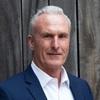Explore all the information on
Food safety
Welcome to the page about Food safety of Engormix; a source of knowledge on Food safety.
When a Laboratory Result Changes Everything The laboratory report arrives late in the morning. The batch complies with all nutritional specifications… except one. A trace of a coccidiostat is detected in a premix intended for a non-target species. The level is very low, only a few milligrams per tonne. And yet, doubt immediately arises: where did it come from? The previous product? Residual material in the circuit? A fraction of dust trapped in a filter? Nothing...
Comments : 0
Recommendations: 0
This analysis is based on the book chapter "Relevant fungal species and associated mycotoxins in storage," authored by Carla Cervini, Andrea Patriarca, Carol Verheecke-Vaessen, and Angel Medina, published in Mycotoxins , DOI: 10.1163/9789004724969_011.
While pre-harvest contamination receives significant attention, storage is identified as the most critical stage in the food supply chain where fungal growth and mycotoxin accumulation can severely impact food and feed safety....
Comments : 0
Recommendations: 0
Recommended events
January 26, 2026
United States - Georgia - Atlanta
Background – what are aflatoxins and their impacts Aflatoxins are highly toxic compounds produced by certain strains of Aspergillus fungi, particularly A. flavus and A. parasiticus. These toxins, regulated at very low levels (parts per...
Comments : 0
Recommendations: 0
1. Introduction The term ‘Aflatoxins’ (AFT) typically refers to the sum of variants AFB1, AFB2, AFG1, AFG2, while ‘Fumonisins’ (FBs) refers to the sum of variants FB1 and FB2 [1]. These groups are mycotoxins produced by molds of genera Aspergillus spp. and Fusarium spp., which commonly colonize corn [2–4]. The contamination of corn by AFT or FBs (especially the main variant FB1) has health implications for consumers of corn-derived products. The AFT are...
Comments : 0
Recommendations: 0
1. Introduction Contamination of feed ingredients or complete feed has been shown to be a potential route of pathogen transmission [1,2]. To control this potential route of disease transmission, efforts can focus on the prevention of the contamination step from occurring or implementing strategies to reduce the survival of the bacteria or virus in the material, and thus reduce the likelihood of causing clinical disease when presented to a naïve animal. Prevention...
Comments : 0
Recommendations: 0
1. Introduction Maize (Zea mays L.) is an important food security and income-generating crop in various areas of the world. Improvements in yields had been obtained by selection of hybrids, mechanisation, irrigation, use of mineral fertilisers and phytosanitary products, leading to an increase in the world production associated with global trades. Besides this agroeconomic system, farmers produce maize as a subsistence crop using local resources. Even in Europe, groups of organic...
Comments : 0
Recommendations: 0
.jpg&w=3840&q=75)

Trade, regulations and current challenges in the rendering industry
Suggested link
Dan Meagher, CEO of Novus International and new AFIA Board chair, discusses his new position, goals for 2025, and current trade issues, as well as his work alongside AFIA's President & CEO, Constance Cullman, to communicate the industry's needs and help shape government policies. ...
Comments : 0
Recommendations: 0
Cereals are an international commodity grown in almost all cultivable regions of the world. The three most important cereals that are destined for human and animal consumption are maize ( Zea mays ), wheat ( Triticum spp.) and rice ( Oryza sativa ). These crops can be affected by biotic and abiotic factors in all phenological stages, affecting quality and final yield. The Fusarium graminearum species complex is the main causal agent of ear...
Comments : 0
Recommendations: 0
1. Introduction Wheat is one of the most important staple foods in the world, but it is jeopardized by many toxigenic fungal species that produce large numbers of mycotoxins with diverse chemical structures. In Hungary, the total wheat production area is approximately one million hectares [1], spanning diverse agronomic and climatic conditions. Major toxigenic fungi. Fusarium species are among the main wheat pathogens in Hungary, posing serious risks to animal and human health...
Comments : 0
Recommendations: 0
ARLINGTON, Va. – May 21, 2025 – The American Feed Industry Association (AFIA) has released its 2025-26 policy priorities, reaffirming the animal food industry’s commitment to advancing policies that improve the business environment for U.S. animal food manufacturers. The new policy agenda focuses on improving the regulatory environment for new ingredients, expanding access to animal food solutions and enhancing market competitiveness while promoting feed...
Comments : 0
Recommendations: 0
.jpg&w=3840&q=75)

Trade, regulations and current challenges in the rendering industry
Suggested link
Introduction Animal husbandry, the agricultural practice of breeding and raising livestock, is a major food-producing industry worldwide. The increasing global demand for animal protein results in rapidly growing animal production as well as the growth of animal feed and the feed additive market. The feed additives have played a significant role in the sustainability of the livestock industry. There are four major drivers for the growth of the animal feed additive market including:...
Comments : 0
Recommendations: 0
GM vs. Non-GM Ingredients in Animal Feed: Implications for Human Health, Livestock, and Global Trade - A.Ashraf The debate over Genetically Modified (GM) vs. Non-GM ingredients in animal feed has been ongoing for decades. While GM crops like soybean, corn, and canola dominate global feed supply, concerns about their effects on human health, animal welfare, and trade regulations continue to shape industry trends. This article explores the science behind GM...
Comments : 0
Recommendations: 0
1. Introduction The current global challenge of achieving food security and ensuring access to sufficient, nutritious, and safe food for all while maintaining or improving agricultural sustainability has been presented in the United Nations’ Sustainable Development Goals (SDGs), particularly Goal 2, which refers to Zero Hunger. This goal emphasizes the necessity to end hunger while achieving food security through improved nutrition and promote sustainable agricultural practices...
Comments : 0
Recommendations: 0
.jpg&w=3840&q=75)

Trade, regulations and current challenges in the rendering industry
Suggested link
James Wen (Evonik Animal Nutrition) discusses the 2024 Feeding Reading Report, highlighting nutrient variations across U.S. feed ingredients and the importance of quality control for nutritionists. The report helps producers optimize feed efficiency, reduce waste, and improve sustainability. ...
Comments : 0
Recommendations: 1
Lara Moody (IFEEDER) comments on the main issues and projects on IFEEDER's 2025 agenda in this Engormix interview during IPPE 2025 in Atlanta, USA....
Comments : 0
Recommendations: 0
Constance Cullman (AFIA) discusses feed ingredients regulations and food safety among AFIA's goals this year, in this Engormix interview during IPPE 2025 in Atlanta, USA....
Comments : 0
Recommendations: 0
The U.S. Food and Drug Administration updated the Mycotoxins in Domestic and Imported Human Foods Compliance Program to include the monitoring of additional mycotoxins of regulatory interest in human foods, specifically T-2/HT-2 toxins and zearalenone. The updated compliance program also reflects the transition by FDA regulatory laboratories to a ...
Comments : 0
Recommendations: 0
.jpg&w=3840&q=75)

Trade, regulations and current challenges in the rendering industry
Suggested link
Scientists have looked at mycotoxin issues in the cereals sector in Ireland to help better protect consumers.
Ireland is an important producer of oats and barley. While some of the output is used as animal feed, a significant proportion is used in the food and beverage industries.
Chris Elliott, an ex-professor of Food Safety at the Institute for Global Food Security at Queen’s University Belfast, and a team of researchers have undertaken the work. It looked at the...
Comments : 0
Recommendations: 0
For the first time, scientists in Brazil used biomarkers to analyze the risk of mycotoxins in consumers’ diets, finding that some exceed the maximum permitted levels.
Researchers from Brazil’s University of São Paulo (USP) conducted a pilot study analyzing samples of flour and rice stored in homes. The study, supported by FAPESP and published in Food Research International, revealed high levels of fungal toxins, otherwise known as mycotoxins, in the...
Comments : 0
Recommendations: 0











.jpg&w=3840&q=75)















